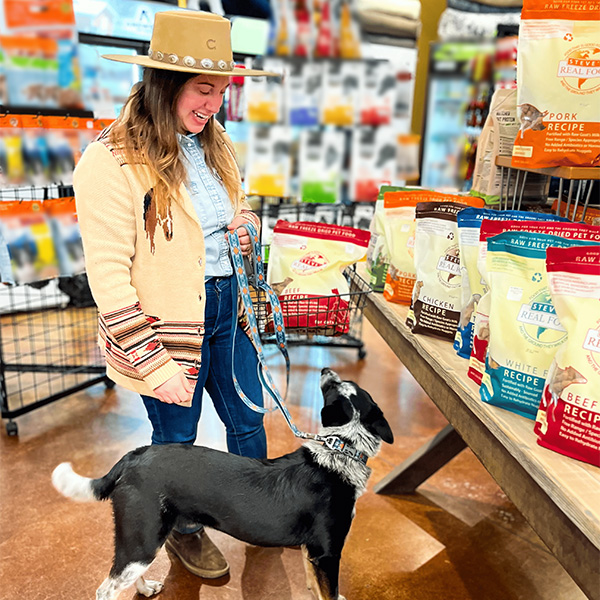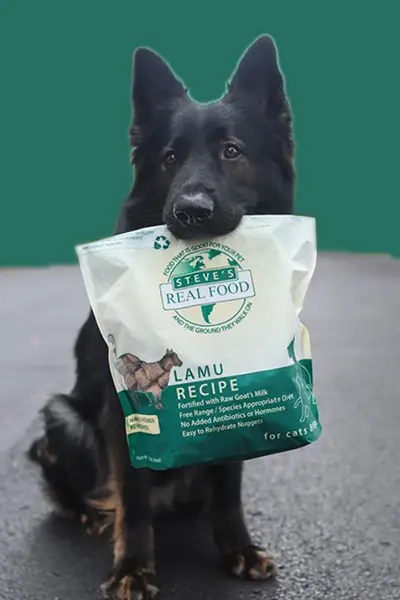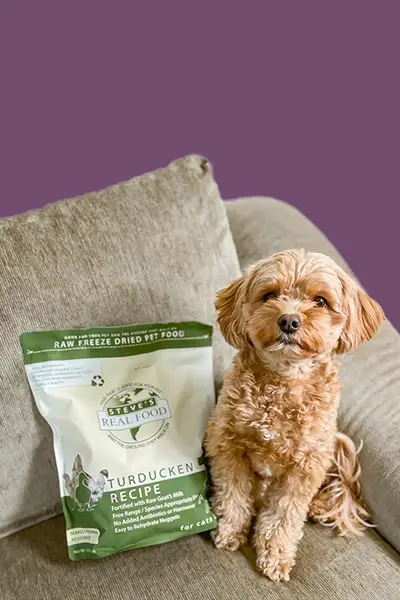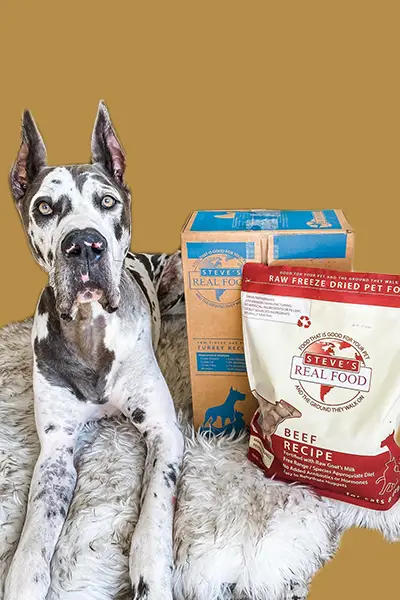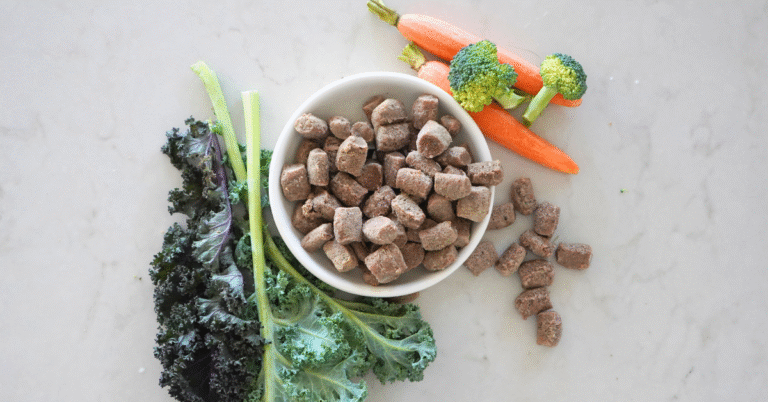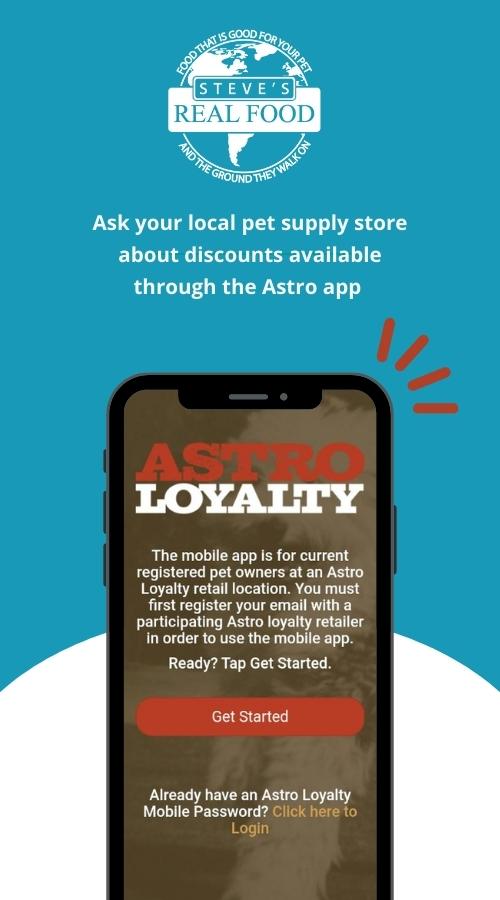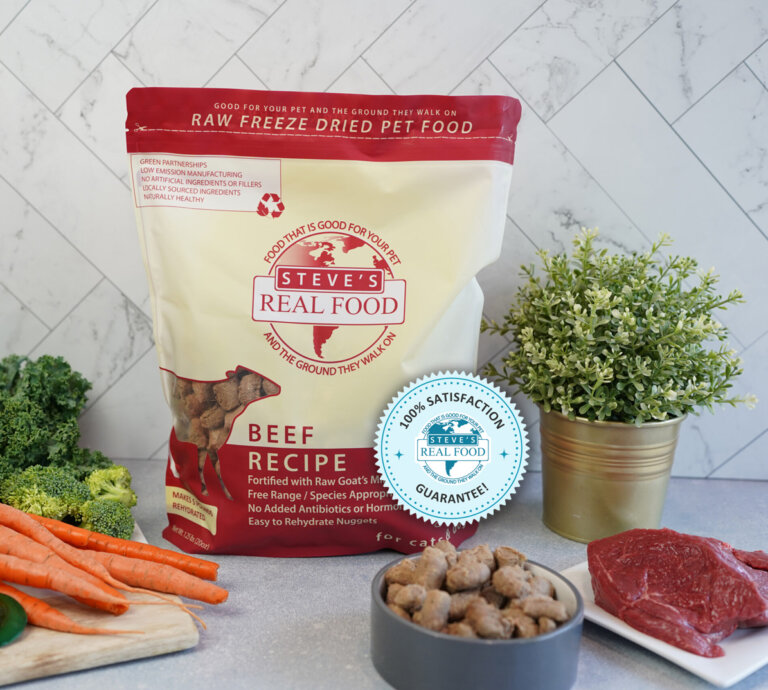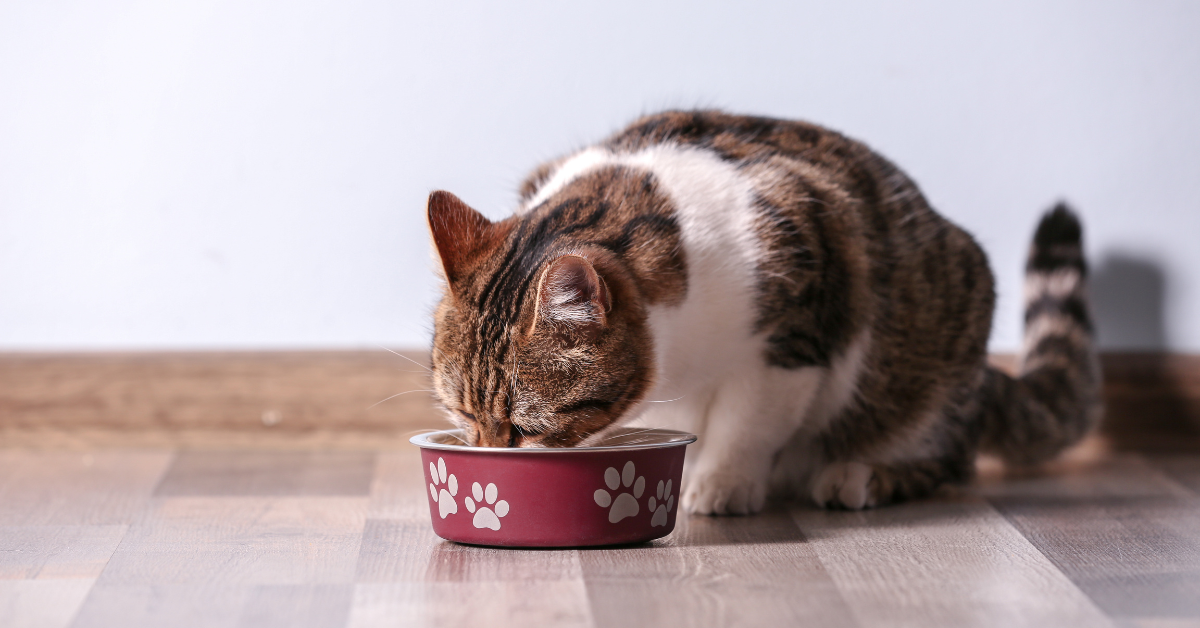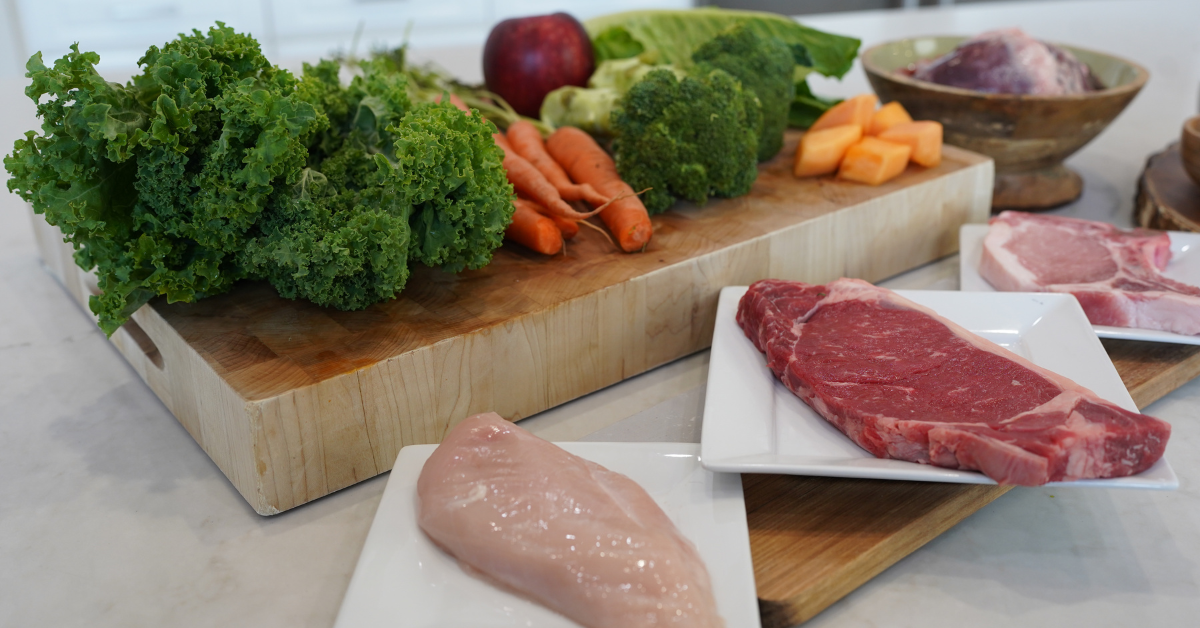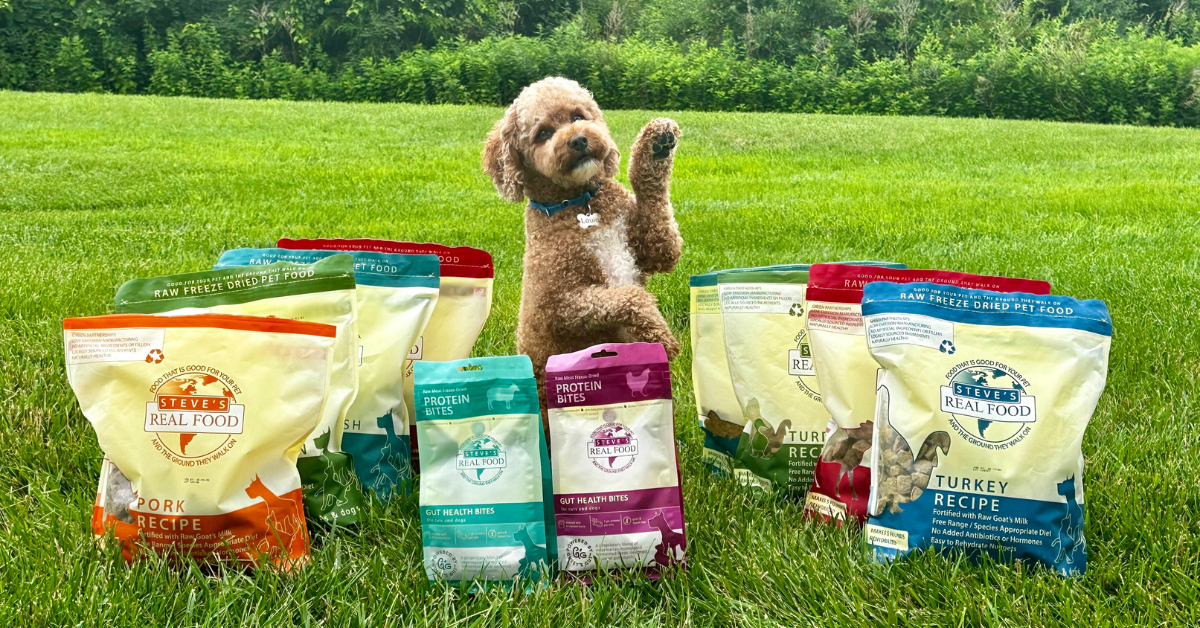How Many Times Has This Happened to You When Buying Cat Food?
You’re at your local independent pet retailer to pick up cat food. These days you don’t bother with dry kibble and speed past it straight to the canned food, nothing but the best for your kitty (you’ve heard great things about raw, maybe next time). A new canned food catches your eye and even though it’s a little more expensive than you’re used to, you spring for a few cans in various flavors like “beef wellington” and “chicken a la king” because your cat is going to LOVE it! You bring it home and excitedly crack it open as your cat rubs on your legs in anticipation of dinner. You put the bowl down and watch in awe as kitty gives it a sniff and WALKS AWAY?! Dumbfounded, you put her in front of the bowl, and again, she walks away, now looking at you as if to say, “where’s my dinner?” You give her some time, hoping she’ll eat when she’s hungry, but you don’t wait long before scraping the food into the trash in defeat. Luckily you had a couple of cans of her old food stashed in the cupboard. As you open it, you think to yourself, “What do I do with the other cans? Was it just that flavor? Do I try again? Was it bad food? What if she won’t eat the other cans? What a waste of money. Is my cat just picky?” You err on the side of caution and exchange the remaining cans for her old food the next day, still unsure of what went wrong. You know one thing is for sure-you’re never straying away from her old food again.
Imprint Eating
What you just experienced wasn’t your fault. You didn’t necessarily pick bad food. You just witnessed one of the feline’s most powerful defense mechanisms at work. It’s known as imprint eating and it affects cat parents across the globe. Like many other species, cats learn from their mother what is safe to eat at a very young age and once they imprint on something, they develop a very strong preference for the taste, texture, and temperature of that food. This develops during weaning age (between 3 and 8 weeks old). If you’ve ever been shunned when offering your cat a piece of your juicy steak, you can thank imprint eating.
Monotony Effect
You might be thinking “My cat isn’t like that. He loves new food and gets bored if he eats the same thing for too long!” And you’d be right too! This is what’s known as the monotony effect; when a cat has been eating the same thing too frequently or for too long, they suddenly go on strike. Instinctually, they begin to crave something different. And you never know when the mood is going to hit! When hunting for their food, cats naturally vary their diet from day to day. They can get away with that because they are so good at hunting!
Why it Matters
Whether your cat is exhibiting one of these behaviors, or a little of both, you’re likely accepting the fact that these picky behaviors are instinctually derived and you might be feeling like you’re in a lose-lose situation. You’re accepting defeat right now – After all, you have a routine, what’s the big deal? Well, there are a lot of things to consider about your cat’s diet that may motivate you to make changes:
- A current health issue
- Perhaps you’re being advised by your holistic or integrative veterinarian to switch to a particular diet to support a recent diagnosis
- A future health issue
- Health issues in the future can’t always be predicted or ruled out
- If your cat develops a food sensitivity, narrowing down the culprit will be crucial
- The benefit of obtaining a variety of nutrients
- Different proteins offer a variety of amino acids, vitamins, and nutrients, filling nutrient gaps naturally
- Discontinuation of your cat’s food
- What would you do if your local independent pet store suddenly stopped carrying your cat’s favorite food?
- Backorders can’t always be predicted – what will you feed as a backup?
- Worst case scenario, your cat’s favorite food gets discontinued altogether
- Financial reasons
- You find yourself on a tighter budget and need to make some changes
- You find yourself with a bigger budget and are ready to upgrade
- You just want to do better
- New information comes to light every day – you discover that an old favorite may no longer be the best nutritional option
Preventing Picky Eating Behaviors in Cats
The obstacle here is that most cat parents aren’t in a situation to prevent a “picky eater” because most cat parents don’t acquire their cat until post-weaning, post-imprinting. Many cats are rescued later in life so a cat parent often has no idea what their cat imprinted on. For those of you in a position to introduce foods to weaning kittens – or even if you just brought home a young kitten – this is the time to introduce a variety of foods and set kitty up for a successful future of a varied diet. Slowly of course, always introduce a brand new protein a little at a time. Canned food boasts a variety of textures; pate, chunk, stew, sliced, shredded, and don’t forget protein variety! One variety every 2-5 days is a good rule of thumb. This is also the perfect time to introduce raw cat food like Quest! Keep in mind that cats imprint on the taste, texture, and temperature – let this guide you. Try different brands, flavors, and textures and offer it at room temperature and straight from the fridge. You may notice more excitement around some flavors or textures than others and be tempted to offer those favorites more often – avoid doing so! Continue to offer variety as kitty grows, rotate throughout their life, and watch them thrive!
Tips for Introducing New Food to Cats
Now, if you’re trying to introduce new food to your cat, for whatever reason – I’ve got some tips for you. These will aid with any food introduction, but I’ll be referencing raw cat food. Despite it being the healthiest option for cats, it has a very particular taste, texture, and temperature that cat parents often find the most challenging to introduce.
Before you start transitioning your cat to a new food, there are three basic rules to follow
- The smoothest transition for preventing digestive upset will take a minimum of 7-14 days – but remember, cats don’t follow a timeline, your transition may take much longer.
- No fasting allowed! It takes as little as 3 days of little to no eating to put a cat at risk for fatty liver disease which is a life-threatening emergency! So make sure to keep some of the old food on hand throughout the transition as a backup.
- Keep an open mind and be willing to try different techniques.
Below is an example of a cat food transition timeline:
- Day 1-3 – a sprinkle of new food in with the old
- Day 2-4 – replace ¼ of the old food with the new
- Day 3-5 – replace ½ of the old food with the new
- Day 4-6 – replace ¾ of the old food with the new
- Day 5-7 – a sprinkle of the old food in with the old
- Day 6-8 – fully transitioned – food is 100% new
You should be able to transition once you’ve gotten over the hump of that first introduction. Remember taste, temperature, and texture. The combo of these for your cat is up to you to discover. You may have to change just one of the “T’s” – or all of them – before getting it just right.
Taste
Start with a protein your cat is used to and loves; this will increase your chances of success and help prevent digestive upset. It’s OK to venture out too, especially if your cat loves a lot of variety. So if your go-to chicken doesn’t work, switch it up and try beef and so on. It’s important to remember that similar species do taste and smell different to a cat. Snubbing chicken doesn’t necessarily mean they’ll snub turkey.
Temperature
Temperature can be one of the most off-putting parts of raw as it is often coming straight out of the fridge from thawing. Cooking raw is a no-no, but not all is lost! Start by bringing the raw as close to room temperature as possible so they’re not met with a cold shock! This can be done by setting it in lukewarm water or leaving it out on the counter for an hour. If that’s not quite doing the trick, performing a parboil or quick-fry and letting it cool might help, but you’ll need to transition away from these methods, shortening the “quick-cook” time gradually until you get the raw to room temp again.
Texture
Just as you start with a familiar flavor, you’ll likely have success with a similar texture. There are many forms of raw cat food on the market; nuggets, bite-size pieces, and smoothie-type consistency are most popular. If your cat is used to canned slices or morsels, start with nuggets or bite-size pieces and smush it or break it up with a fork. Likewise, if your cat is used to a pate or loosely ground canned food, you can still start with the chunkier raw – simply blend it or stir it up, or start with the smoothie-type raw. Another thing to consider is liquid. Raw cat food contains all the naturally occurring intracellular moisture a cat needs, but if kitty is used to liquid in their canned food, you might want to add liquid to the raw for transitional purposes; raw goat’s milk, pet-appropriate bone broth or even water may do the trick.
Where to Start Raw Feeding Your Cat
Now that you’ve selected which raw cat food to try, it’s time to introduce it! There’s no right or wrong way to do it, jump in wherever you think is a good fit for you and your cat! Just remember, cats are cats – they’re curious, and they like to feel like they’re winning. They love to outsmart you so you may need to get crafty.
Sneak it in
Cat parents are often tempted to mix or stir the raw into the old food and this almost never works. The trick is preventing their senses from the shock of something new and foreign – blending even the smallest amount throughout the food does the opposite. Instead, place a slight amount of raw food at the bottom of the bowl first and put the old food on top to mask the new food. Another sensory trick is to place a small amount of raw food in its own bowl near their feeding station – leave it there while feeding a meal of the old food so kitty can acquire the smell and associate it with eating. This method is wasteful but can be effective.
Make a game of it
Utilize their prey drive. Turn the raw food into something they want to catch. This works best with freeze-dried raw, but feel free to use your imagination. Putting a few nuggets in a treat ball for kitty to bat around or tying a piece to fishing line and pulling it down the hall – are both games in which kitty can hunt, allowing instinct to kick in. The options are endless; hide pieces of freeze-dried around the house – on a bookshelf, under a chair. Toss it across the floor! Anything to ignite that hunting instinct.
Forbidden adventures
This area is tricky for cat parents because forbidden areas are typically just that – forbidden. Nonetheless, this is one of my favorites. Again, the possibilities are endless, but here are some goodies; go through all of the motions of feeding time, putting raw food in the bowl, and taking it away before they can get to it. Smear raw food onto a spoon and let them sniff it and lick it off – this is especially successful if your cat is the begging type and you pull it off during one of your own meals. Leave raw food out on the table or counter and walk away allowing them to explore. Yes, you may be enabling unwanted behaviors, but if the payoff is kitty eating raw food, is it really the worst thing?
There’s Light at the End of the Tunnel
Cats wouldn’t be cats if they weren’t… cats, but isn’t that what makes them so lovable? Remember, the introduction is the hardest part. Keep an open mind, try new things, don’t trap yourself in a timeline, remember the “T’s” and absolutely no fasting! I wish I could tell you exactly which transition combo would work for you, but every cat is unique. Don’t give up! Watching your cat transform into a healthier, thriving being will be worth it!
Find a store near you using our Store Locator or buy online at RawPetFood.com, the official online store of Steve’s Real Food!
 Beef
Beef Chicken
Chicken Whitefish
Whitefish Pork
Pork Lamb
Lamb Turkey
Turkey Turducken
Turducken All Protein
All Protein Beef
Beef Chicken
Chicken White Fish
White Fish Pork
Pork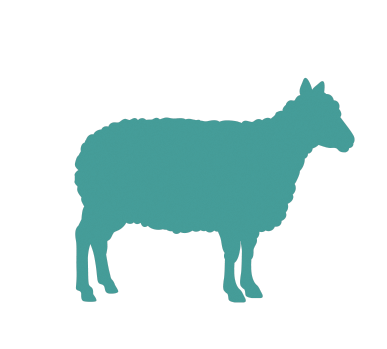 Lamb
Lamb Turkey
Turkey Duck
Duck All Products
All Products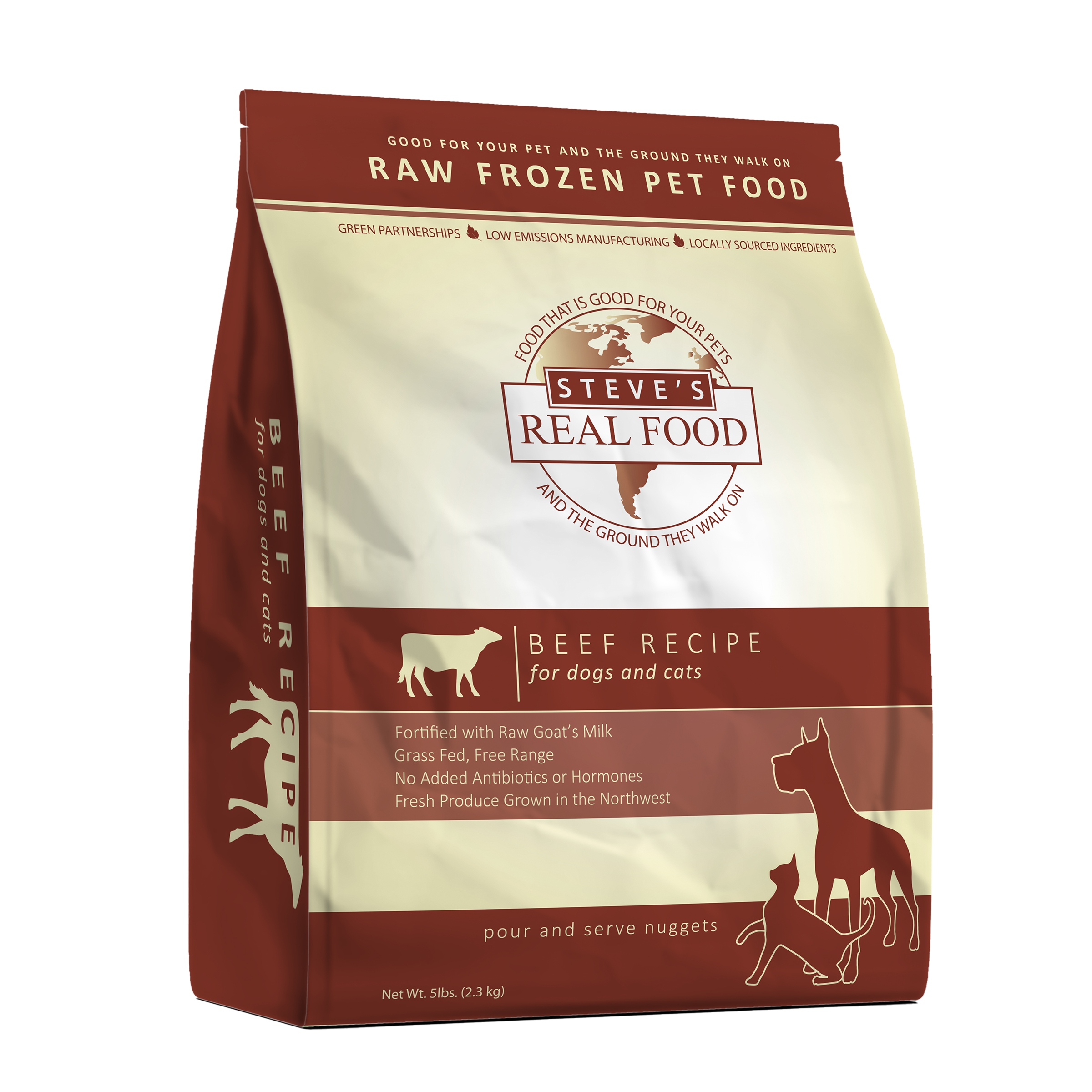 Frozen Raw Pet Food
Frozen Raw Pet Food
 Freeze Dried Raw Pet Food
Freeze Dried Raw Pet Food
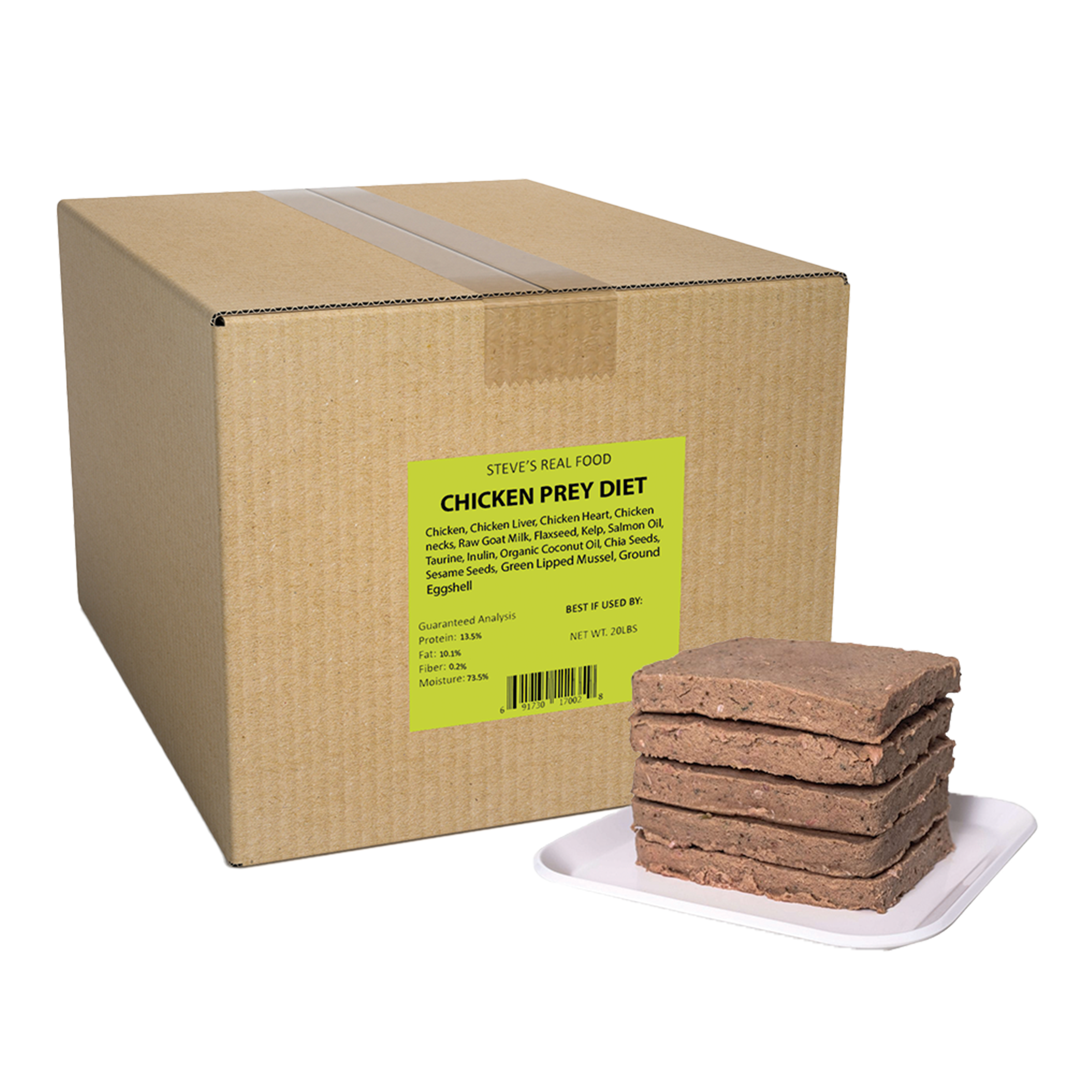 Frozen Prey Diet
Frozen Prey Diet
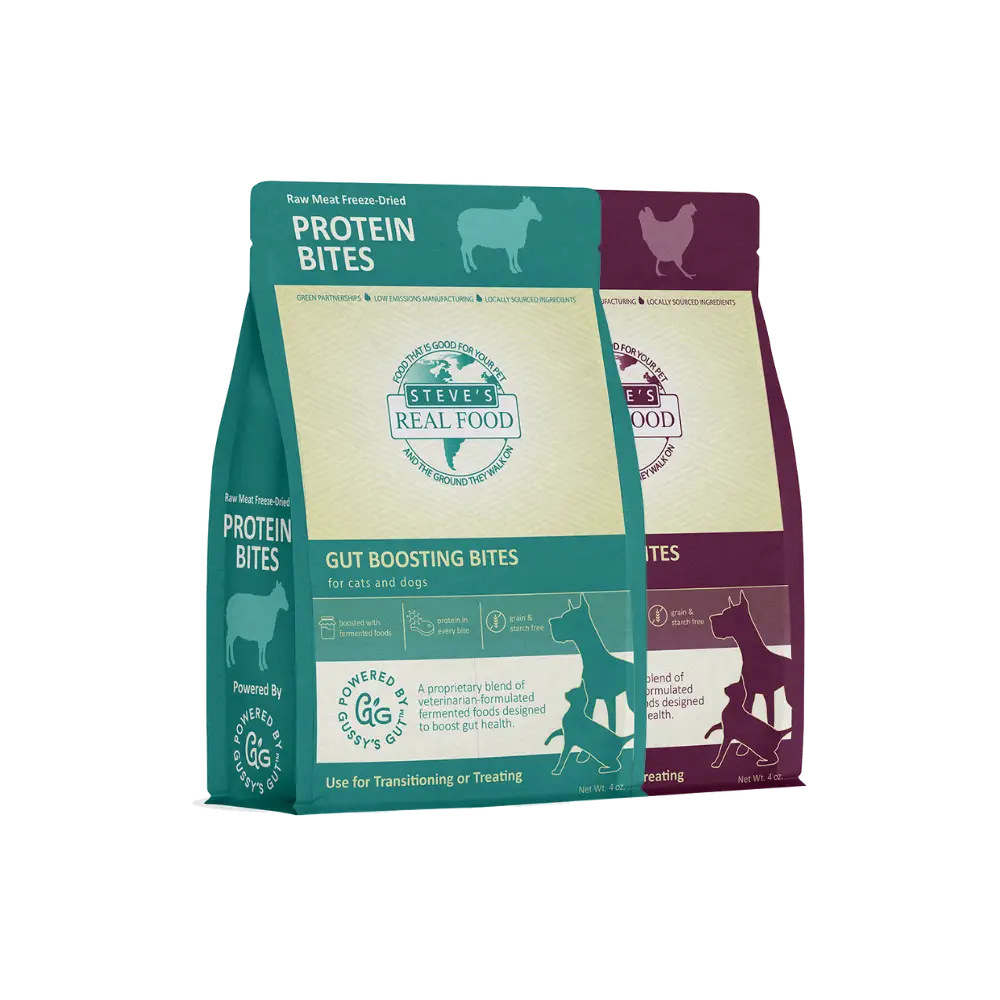 Freeze Dried Protein Bites
Freeze Dried Protein Bites
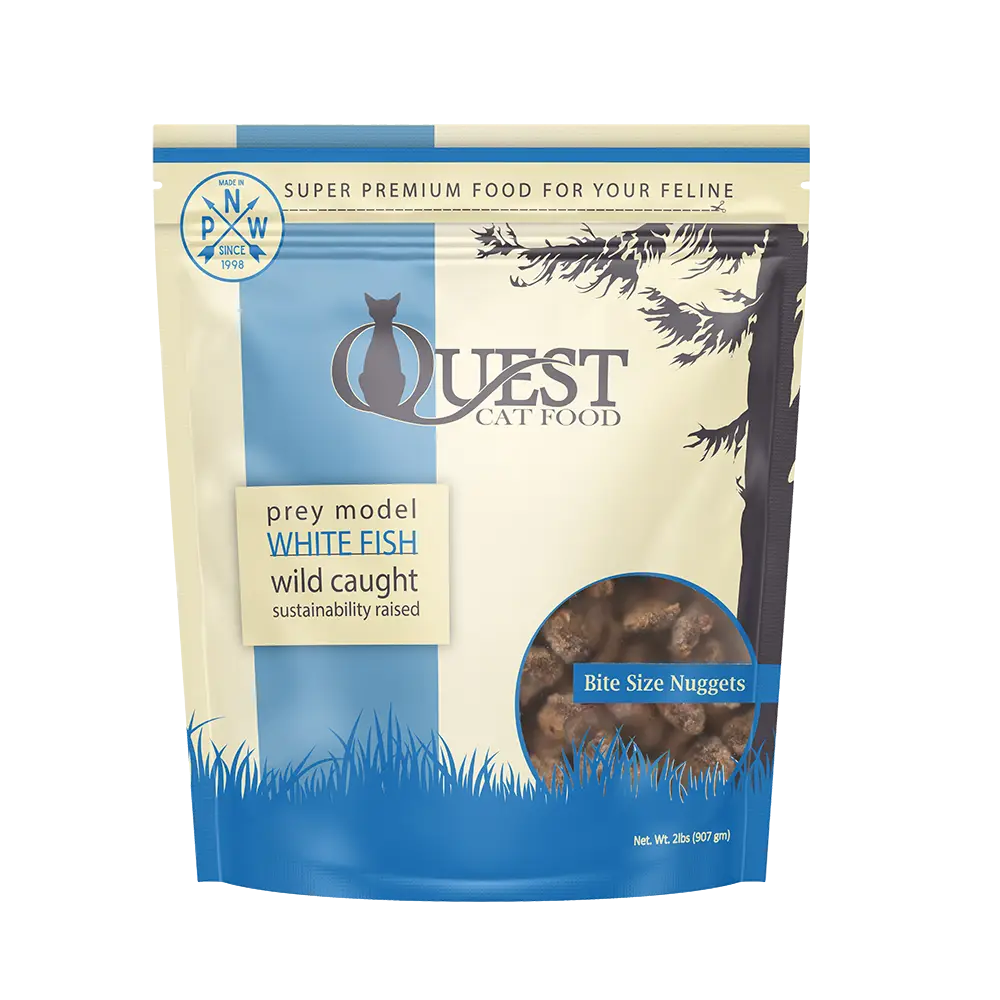 Frozen Quest
Frozen Quest
 Freeze Dried Quest
Freeze Dried Quest
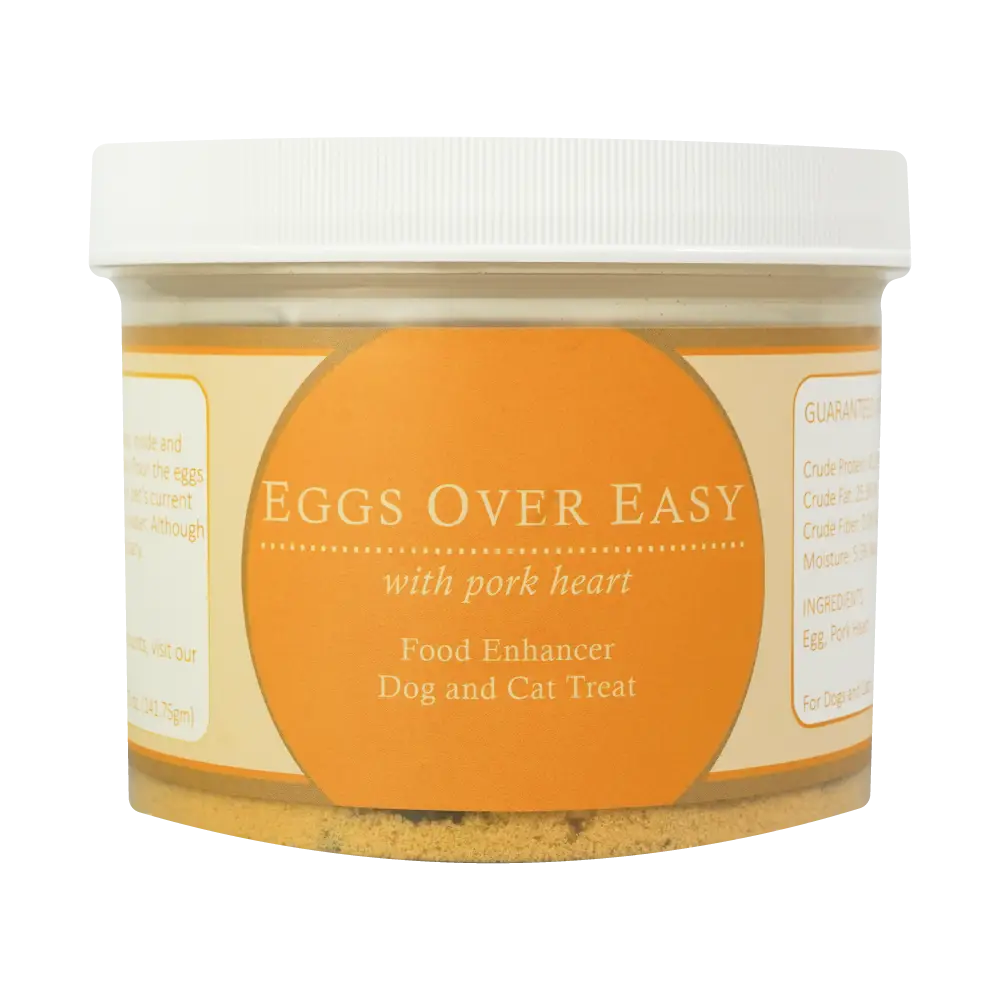 Eggs over Easy
Eggs over Easy
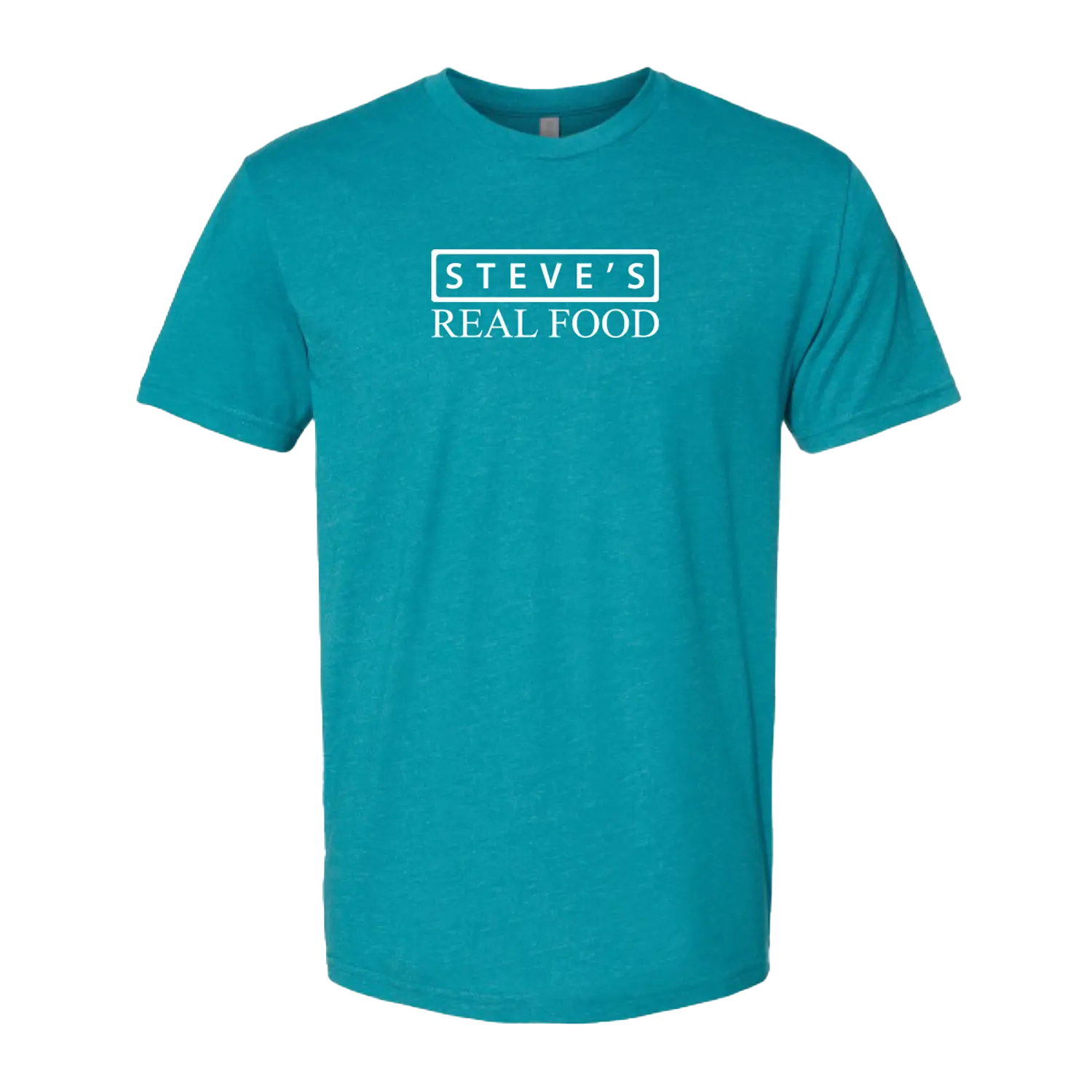 Steve's Merch
Steve's Merch 